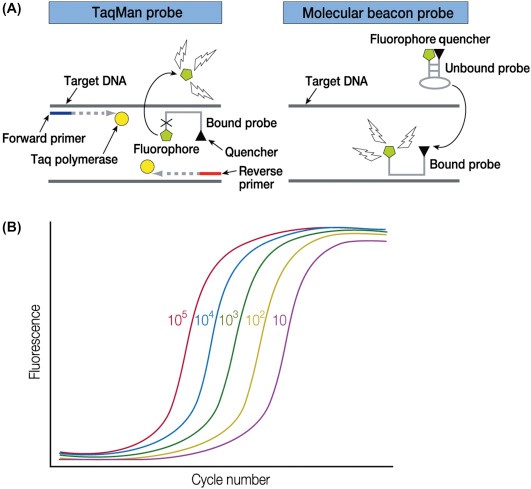The polymerase chain reaction is a biological technology to produce an amplified number of DNA copies of a sequence. Three primary steps involved are denaturation, annealing, and extension. PCR techniques have a lot of applications in plant biology, diagnosis of influenza- human brucellosis Salmonellae, cloning purpose, in the field of Dentistry, microbiology, forensic science, etc., There are many types of PCR techniques such as RT-PCR, touchdown PCR, real-time PCR, nested PCR, multiplex PCR, semi-quantitative PCR, assembly PCR, asymmetric PCR, LATE- PCR, dial out-PCR, etc., This paper is an attempt to give a brief idea about the various types of PCR techniques :
- MULTIPLEX PCR – It detects different pathogens in a single sample, used to identify exonic/intronic sequence in specific genes. The design of primers is different because they are meant to adhere to specific DNA sequences. Here in multiplex PCR, the base pair lengths should be different to form distinct bands because varying sizes of different DNA genes are targeted in a single reaction to avoid higher expenses, time consumption and recognizes many pathogens at once. This technique is used to detect viral/bacterial and other infectious agents. The presence of one or more primer pairs increases the risk of primer-dimer amplification and discrimination of DNA fragments. In addition to buffers multiplex PCR contains Taq polymerase additive, which decreases the competition among amplicons. Some examples of multiplex PCR techniques.
- NESTED –SEMI NESTED PCR – Two sets of primers are used here for a single locus point. The first set is an amplified sequence and the second set is complementary to the first sequence which will be shorter than the first amplified product. Nested PCR is used because it intends to reduce the contaminations in products due to the amplification of unexpected primer binding sites. It has drawbacks like the risk of contamination and needs great care while being performed. These contaminations can be controlled by adding ultra-pure oil of two mixtures, and by using primers designed to anneal at different temperatures. Nested/semi-nested PCR was used in identifying Brucella in human blood samples. This method is more specific but has disadvantages like ‘primer and dimerization’ cross-reaction. No single specific species yet cross-reacted with PCR products.
- STANDARD PCR – This is a simple efficient and sensitive technique. This method is carried out with one pair of primers which amplifies the targeted genomic sequence of Brucella species. It also helps in the early diagnosis of Brucella. Standard PCR technique is used to determine the number of leucocytes DNA/ haemo compounds.
- QUANTITATIVE/SEMI QUANTITATIVE REAL-TIME PCR – Fluorescent dyes like SYER Green master mix are used for the identification of samples and probes are used to measure the amount of amplified product in real-time. cDNA is obtained by RT-PCR for an RNA sample. ApoA1/Bactin are used as markers followed by a gel electrophoresis process with ethidium bromide dye staining procedure.
- REAL-TIME PCR – It is also called quantitative PCR(q PCR), a highly reproducible, rapid, sensitive, and specific technique for automating data. Brucella species have been developed for targeting the 16S 23S gene through this technique. It has a lower risk of contamination. It has 2 techniques for detection 1. SYBER Green dye(or) fluorochromes 2. Taq man probes (or) fluoroprobes.

REFERENCES:
- Singh, J., Birbian, N., Sinha, S., & Goswami, A. (2014). A critical review on PCR. Int J Adv Res Biol Sci, 1(7), 65-80.
- “Polymerase Chain Reaction (PCR)”. National Center for Biotechnology Information, U.S. National Library of Medicine.